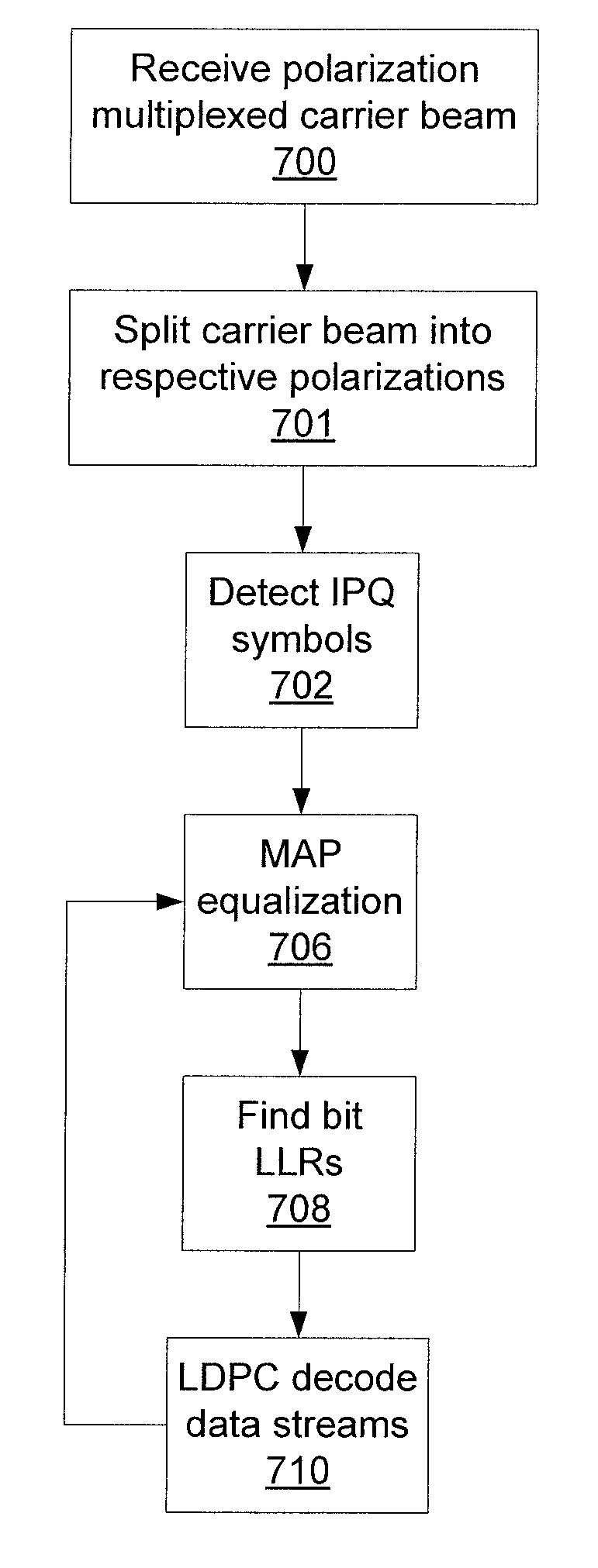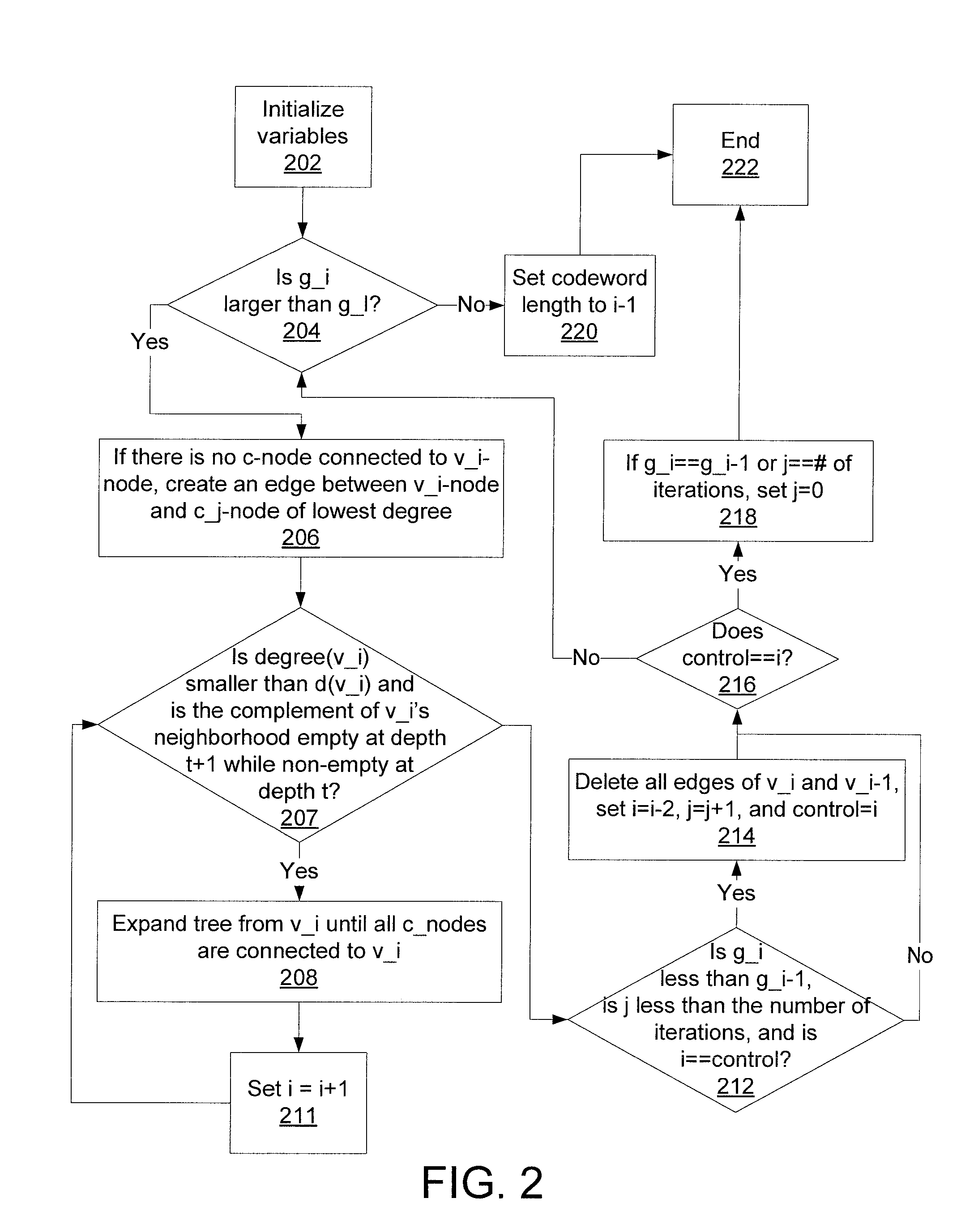Modified progressive edge-growth LDPC codes for ultra-high-speed serial optical transport
a technology of ldpc codes and serial optical transport, applied in the direction of coding, code conversion, amplitude demodulation, etc., can solve the problems of increasing the sensitiveness of transmission to errors, difficult implementation, and costing performance, so as to reduce channel impairments
- Summary
- Abstract
- Description
- Claims
- Application Information
AI Technical Summary
Benefits of technology
Problems solved by technology
Method used
Image
Examples
Embodiment Construction
[0019]To strike a middle ground between performance and ease of implementation, low density parity check (LDPC) codes based on a modified progressive edge-growth (MPEG) method are used instead of quasi-cyclic (QC) LDPC codes. The PEG method establishes the connections between bit and check nodes in the corresponding bipartite (Tanner) graph representation of a parity-check matrix in an edge-by-edge fashion. Because the PEG method is a best effort method, it is highly flexible in comparison with various QC-LDPC code designs. Using the MPEG method according to the present principles, LDPC codes can be designed that have high performance and yet are also easy to implement.
[0020]Embodiments described herein may be entirely hardware, entirely software or including both hardware and software elements. In a preferred embodiment, the present invention is implemented in software, which includes but is not limited to firmware, resident software, microcode, etc.
[0021]Embodiments may include a ...
PUM
 Login to View More
Login to View More Abstract
Description
Claims
Application Information
 Login to View More
Login to View More - R&D
- Intellectual Property
- Life Sciences
- Materials
- Tech Scout
- Unparalleled Data Quality
- Higher Quality Content
- 60% Fewer Hallucinations
Browse by: Latest US Patents, China's latest patents, Technical Efficacy Thesaurus, Application Domain, Technology Topic, Popular Technical Reports.
© 2025 PatSnap. All rights reserved.Legal|Privacy policy|Modern Slavery Act Transparency Statement|Sitemap|About US| Contact US: help@patsnap.com



